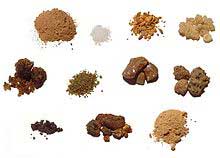Incese stick of India

India has a rich tradition of using incense in many social and
religious occasions since time immemorial. Incense
sticks, also known as agarbathi (or agarbatti derived
from Sanskrit word Agaravarthi, gara = odour, agar =
aroma, varthi = wound ) and joss sticks, in which an
incense paste is rolled or moulded around a bamboo
stick, is one of the main forms of incense in India. The bamboo method
originated in India, and is distinct from the
Nepal/Tibet and Japanese methods of stick making in
which a bamboo stick is not used. Though the method is
also used in the west, particularly in America, it is
strongly associated with India. Other main forms of
incense are cones and logs and Benzoin resin ( In
Sanskrit Saambraani), which are incense paste formed
into pyramid shapes or log shapes, and then dried.
A
uniform and codified system of incense-making first
began in India. Although Vedic texts mention the use of
incense for masking odors and creating a pleasurable
smell, the modern system of organized incense-making was
likely created by the medicinal priests of the time.
Thus, modern, organized incense-making is intrinsically
linked to the Ayurvedic
medical system in which it is rooted.
History:
The oldest source on incense is the
Vedas, specifically, the Atharva-veda and the Rigveda.
Incense-burning was used both to create pleasing aromas
and a medicinal tool. Its use in medicine is considered
the first phase of Ayurveda, which uses incense as an
approach to healing. Incense-making was thus almost
exclusively done by monks.
The specific knowledge of
incense as a healing tool was assimilated into the
religious practices of the time - early Hinduism. As
Hinduism matured and Buddhism was founded in India,
incense became an integral part of Buddhism as well.
Around 200 AD, a group of wandering Buddhist monks
introduced incense-making to China. Buddhism gradually
developed into Vietnam, the Asian countries and the
whole world.
Ingredients:

The basic ingredients are BAMBOO STICK, paste (generally made of
charcoal dust and joss/jiggit/gum/tabu powder
- an adhesive made from the bark of litsea glutinosa and
other trees), and the perfume ingredients - which would
be a masala (mixed) powder of ground ingredients. The
bamboo stick is rolled into the masala, or is sometimes
rolled into a perfume liquid consisting of synthetic
ingredients. Stick machines are sometimes used, which
coat the sticks with paste and perfume, though the bulk
of production is done by hand-rolling at home. There are
about 5,000 incense companies in India which take raw
un-perfumed sticks hand-rolled by approximately 200,000
women working part-time at home, apply their own brand
of perfume, and package the sticks for sale. An
experienced home-worker can produce 4,000 raw sticks a
day. There are about 25 main companies, who together
account for up to 30% of the market, and around 500 of
the companies, including a significant number of the
main companies, are based in Bangalore.
Production
The state of Karnataka, referred to as
the Capital of Agarbathi (INCENSE STICK), is the
leading producer of the agarbathi in India, with Mysore
and Bangalore being the main manufacturing centres.The
Mysore region is recognised as a pioneer in the activity
of agarbathi manufacturing and this is one of the main
cluster activities that exist in the city. This is
because it has a natural reserve of forest products
especially Sandalwood, which provide for the base
material used in production.
Vietnam is blessed for
raw materials incense, incense toothpick manufacturing
should grow very strong in this country, with the number
up to about 300 to 500 companies work in this field.

 The basic ingredients are BAMBOO STICK, paste (generally made of
charcoal dust and joss/jiggit/gum/tabu powder
- an adhesive made from the bark of litsea glutinosa and
other trees), and the perfume ingredients - which would
be a masala (mixed) powder of ground ingredients. The
bamboo stick is rolled into the masala, or is sometimes
rolled into a perfume liquid consisting of synthetic
ingredients. Stick machines are sometimes used, which
coat the sticks with paste and perfume, though the bulk
of production is done by hand-rolling at home. There are
about 5,000 incense companies in India which take raw
un-perfumed sticks hand-rolled by approximately 200,000
women working part-time at home, apply their own brand
of perfume, and package the sticks for sale. An
experienced home-worker can produce 4,000 raw sticks a
day. There are about 25 main companies, who together
account for up to 30% of the market, and around 500 of
the companies, including a significant number of the
main companies, are based in Bangalore.
The basic ingredients are BAMBOO STICK, paste (generally made of
charcoal dust and joss/jiggit/gum/tabu powder
- an adhesive made from the bark of litsea glutinosa and
other trees), and the perfume ingredients - which would
be a masala (mixed) powder of ground ingredients. The
bamboo stick is rolled into the masala, or is sometimes
rolled into a perfume liquid consisting of synthetic
ingredients. Stick machines are sometimes used, which
coat the sticks with paste and perfume, though the bulk
of production is done by hand-rolling at home. There are
about 5,000 incense companies in India which take raw
un-perfumed sticks hand-rolled by approximately 200,000
women working part-time at home, apply their own brand
of perfume, and package the sticks for sale. An
experienced home-worker can produce 4,000 raw sticks a
day. There are about 25 main companies, who together
account for up to 30% of the market, and around 500 of
the companies, including a significant number of the
main companies, are based in Bangalore.